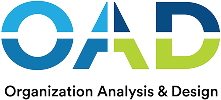Hiring used to be about instincts. Now, it’s about insight. Companies that switch to a data-driven hiring process consistently outperform those relying on gut decisions—and the gap is only widening.
Table of Contents
- Why Most Hiring Processes Fail
- Redefine What “Qualified Candidates” Really Means
- Onboarding: Where High Potential Becomes High Performance
- Build a Long-Term Talent Pipeline (Even When You’re Not Hiring)
- Small Business? Here’s How to Scale Without Overwhelm
- The Future of Hiring: What Forward-Thinking Leaders Are Already Doing
- Final Thoughts: From Reactive to Predictive Hiring
- Build a Team That Drives Results
Why Most Hiring Processes Fail
The biggest mistake most companies make? Treating hiring like a checklist instead of a strategic function. When you rely on resumes, gut feelings, or “how they came across,” you’re not just guessing—you’re gambling with team performance and long-term growth.
Even world-class leaders like Jeff Bezos have said they’d rather endure a hiring slowdown than “lower the bar” for talent. Why? Because a bad hire doesn’t just cost money—it infects culture, slows teams down, and creates more problems than it solves.
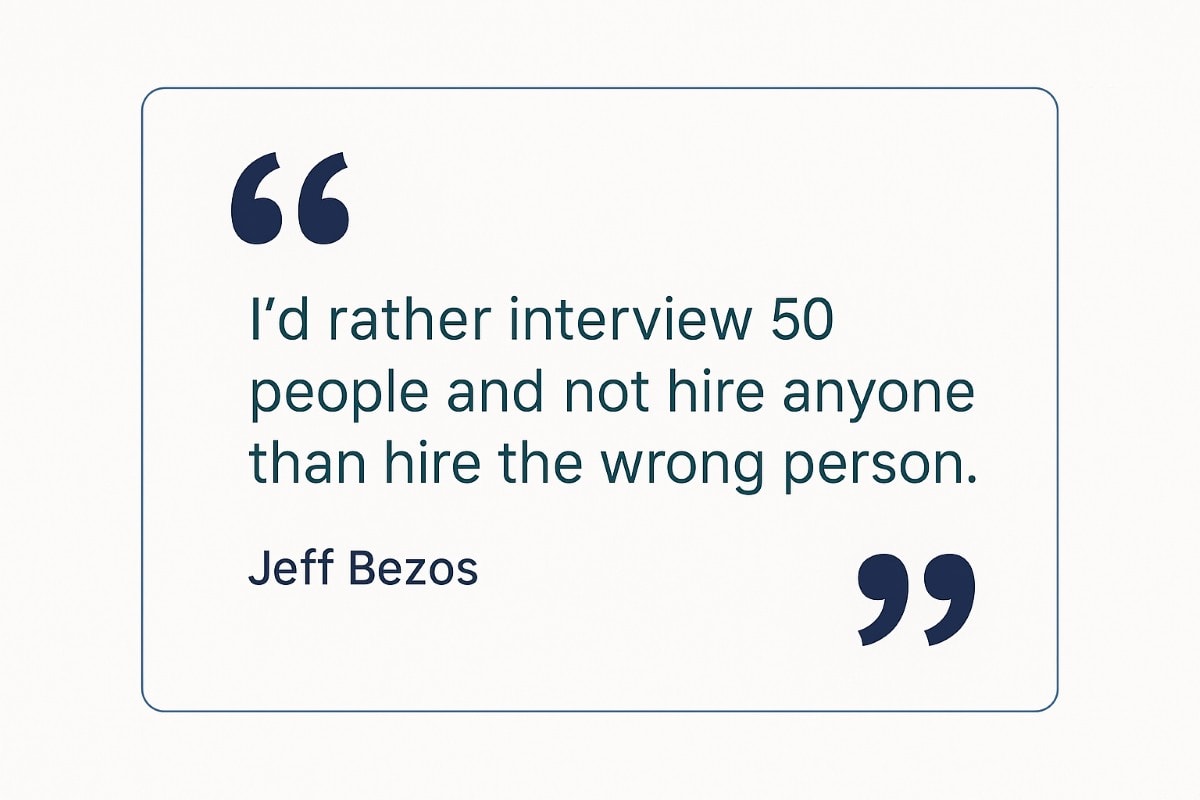
Modern hiring failures often trace back to three culprits: outdated interview questions, vague job descriptions, and the myth that experience equals performance. Too often, traditional processes overlook the importance of assessing relevant experience—focusing on any experience rather than evaluating how a candidate’s background directly applies to the role at hand. Without data on behavior, motivation, and fit, most hiring processes are flying blind.
That’s where structured, data-informed hiring flips the script—turning a guessing game into a strategic edge.
Preparation Isn’t Optional—It’s Your Edge
Every exceptional hire starts before the first interview. It begins with a hiring manager who understands the role beyond the job title—someone who can articulate not just what the candidate needs to do, but how success in the role fuels team performance and business growth.
This level of preparation means more than reviewing resumes. It means defining which competencies are mission-critical, aligning with your team on performance benchmarks, and separating “must-have” traits from “nice-to-have” distractions. When this clarity is in place, your interviews become sharper, your screening faster, and your hiring decisions smarter.
Preparation transforms hiring from reactive to strategic. It reduces wasted cycles, eliminates guesswork, and ensures every step in the process—every question, every assessment, every offer—aligns with your long-term goals.
Redefine What “Qualified Candidates” Really Means
A polished resume and impressive job title might look great on paper—but they rarely tell the full story. The question isn’t “Can they do the job?” It’s “Will they thrive in this role, with this team, under your leadership style?”
Take Elon Musk, for example. He’s known for ignoring credentials entirely and asking candidates to explain how they solved real problems. Why? Because real-world thinking reveals far more than a bullet-point list ever could.
To truly define a “qualified candidate,” you need more than credentials. You need data on how someone works under pressure, how they approach challenges, and whether their behavioral wiring aligns with your team dynamics. This is where a data-driven hiring process shines—giving you insight into traits like adaptability, drive, and collaboration style before the first interview even happens. Incorporating test results into your evaluation process allows you to objectively assess candidates’ abilities and make more informed decisions.
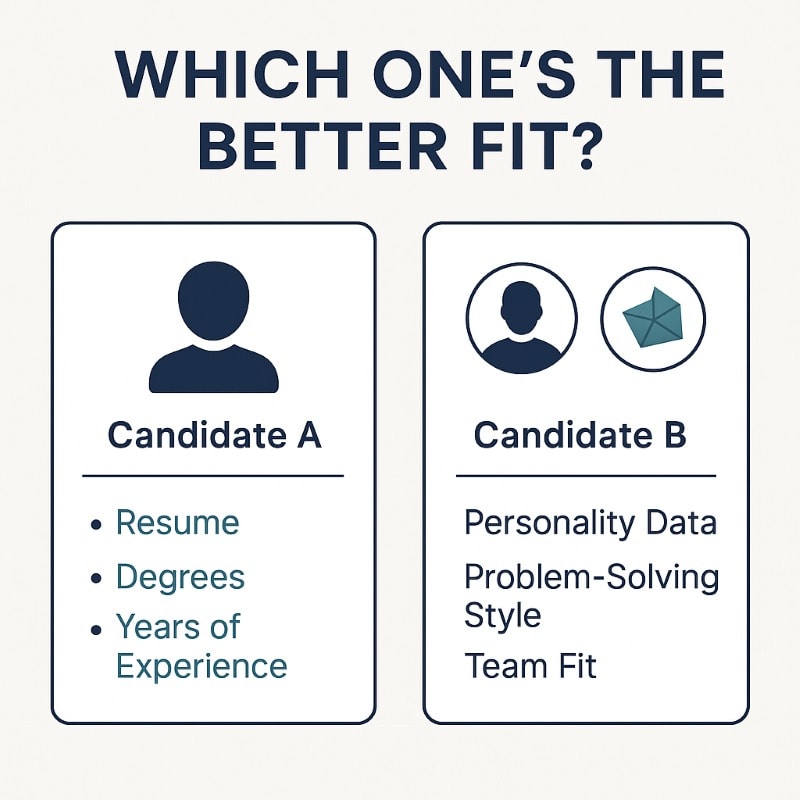
With this approach, you move beyond surface-level screening and start surfacing quality candidates who are most likely to succeed and grow within your organization.
Write a Job Description That Repels the Wrong People
Most job descriptions read like recycled HR templates—vague, bloated, and forgettable. But your job ad isn’t just a formality; it’s the first filter in your hiring process. A well-crafted job announcement is essential for attracting the right candidates and setting clear expectations from the start. Done right, it attracts high-fit candidates while turning away mismatches early.
Instead of listing responsibilities, focus on outcomes. Replace “must have 3 years of experience in X” with “you’ll lead the rollout of a new onboarding system across three departments in your first 90 days.” That’s the kind of language top performers gravitate toward. Clearly defining open roles and positions ensures candidates understand exactly what is expected and helps streamline the hiring process.
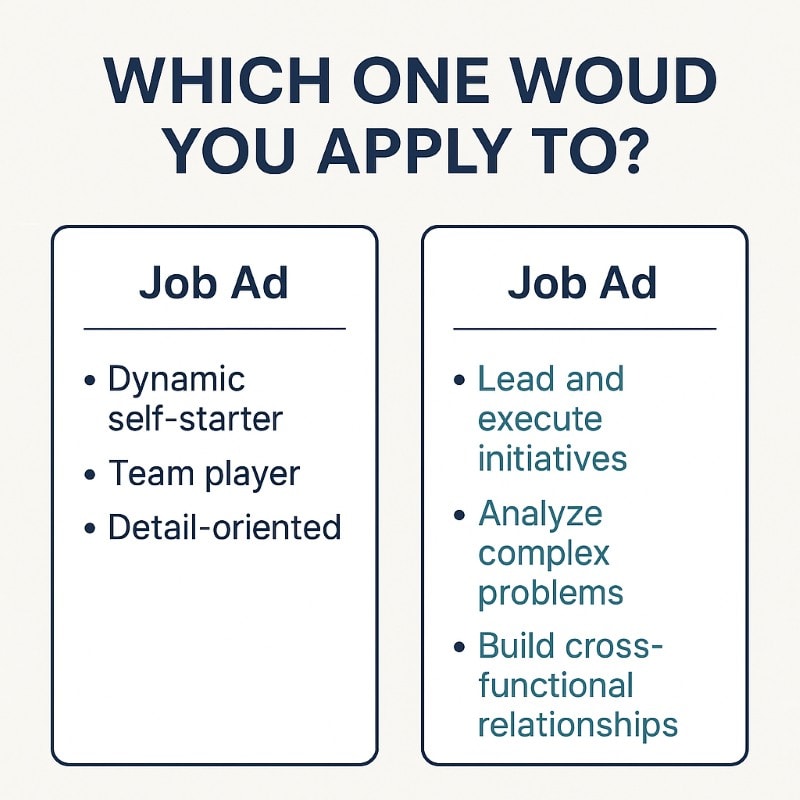
Also, don’t underestimate how your culture shows up in copy. Use words that reflect your company’s energy, expectations, and values. Want proof it works? Test your job description with current high-performers and ask: “Would this have made you apply?” This process can help refine descriptions for both existing and new positions, ensuring clarity and relevance for all roles.
Screening Isn’t About Elimination—It’s About Insight
Traditional screening filters people out. Data-driven screening brings clarity in. The goal isn’t to shrink the pile of resumes—it’s to surface the best-fit candidates based on how they’ll actually perform. A streamlined application process can help attract more candidates by making it easier for them to apply and reducing barriers that might otherwise discourage them from completing their applications.
That means going beyond keywords and degrees. A strategic screening process includes behavioral assessments, job-specific simulations, and cognitive benchmarks tailored to the role. Not just “Can they do it?” but “Will they do it well, here, under pressure, with this team?” It’s also important that candidates are completing and submitting all required application materials, including a cover letter, to ensure a thorough evaluation and that nothing is missed during the application process.
Unconscious bias is one of the biggest risks during early screening. Without structured tools, it’s easy to overlook high-potential candidates who don’t “present well” on paper. Recruiters play a key role in using standardized data points—like OAD’s scientifically validated assessments—to reduce bias while increasing precision and improving the screening process.
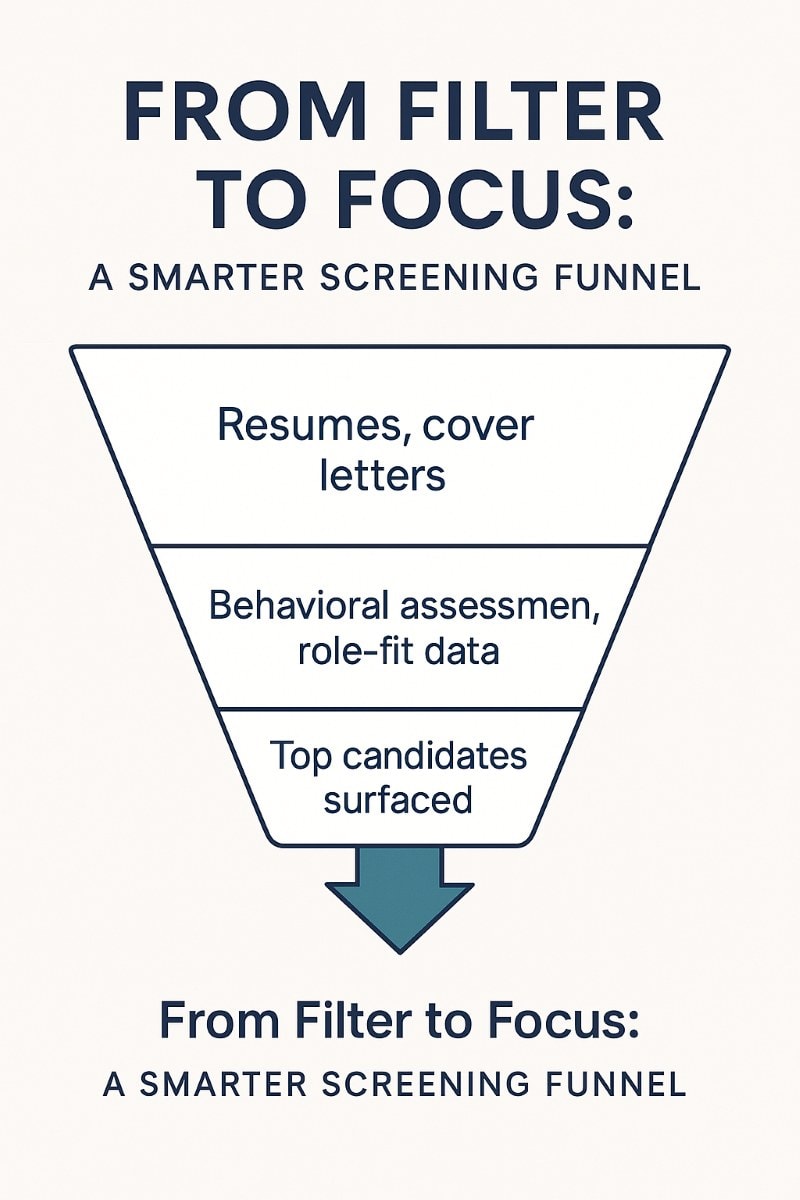
Run Interviews Like a High-Stakes Decision—Because It Is
Most interviews focus on likability and surface-level answers. But hiring someone based on how well they “clicked” in a 45-minute conversation is like buying a house after seeing only the paint color. A well-structured interview process is essential for evaluating candidates effectively and ensuring a positive candidate experience.
Great hiring managers treat interviews like decision-making engines. That means using structured interview scorecards, consistent behavioral questions, and role-specific scenarios. Interview questions should be job-related to ensure fair and effective evaluation. Not only does this reduce bias—it improves your chances of predicting on-the-job success.
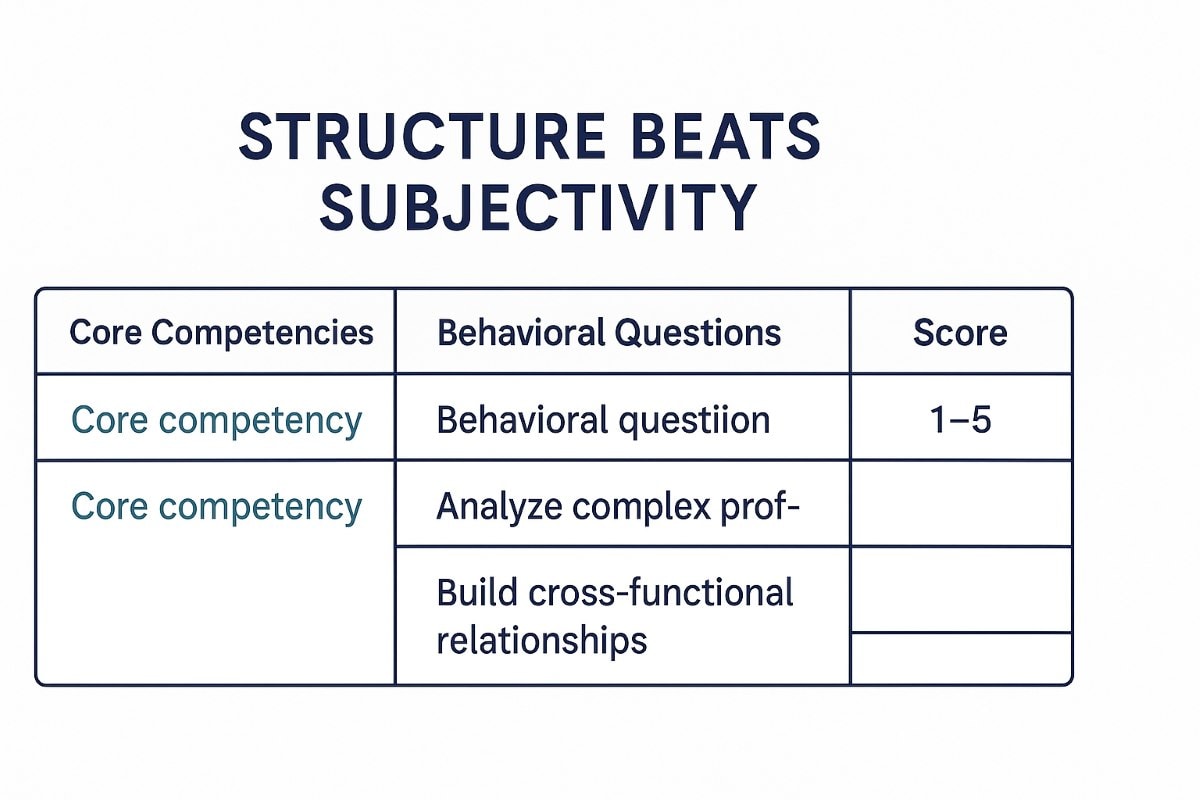
Want to know how someone really works? Ask how they handled a specific failure. Or give them a task they’d face in the first 30 days and watch their process unfold. The best interviews don’t just gather information—they simulate reality. In person interviews are especially valuable for assessing candidates in real-world scenarios and understanding how they interact within your team.
Efficiently schedule interviews to keep the hiring process smooth and organized.
Background Checks, References, and the Trap of Confirmation Bias
Background checks and reference calls are supposed to reduce hiring risk—but too often, they just reinforce your gut feeling. That’s confirmation bias at work: you’ve already decided someone’s a great fit, and now you’re just looking for proof. Conducting a thorough background check is a crucial part of the hiring process, helping employers ensure legal compliance and make informed decisions.
The smarter approach? Treat these steps as an opportunity to uncover gaps, not validate assumptions. Ask former managers for specific examples of how the candidate handled pressure, took feedback, or collaborated with others. Systematically checking references allows you to gather objective information and evaluate candidate suitability. Listen closely for patterns, not praise.
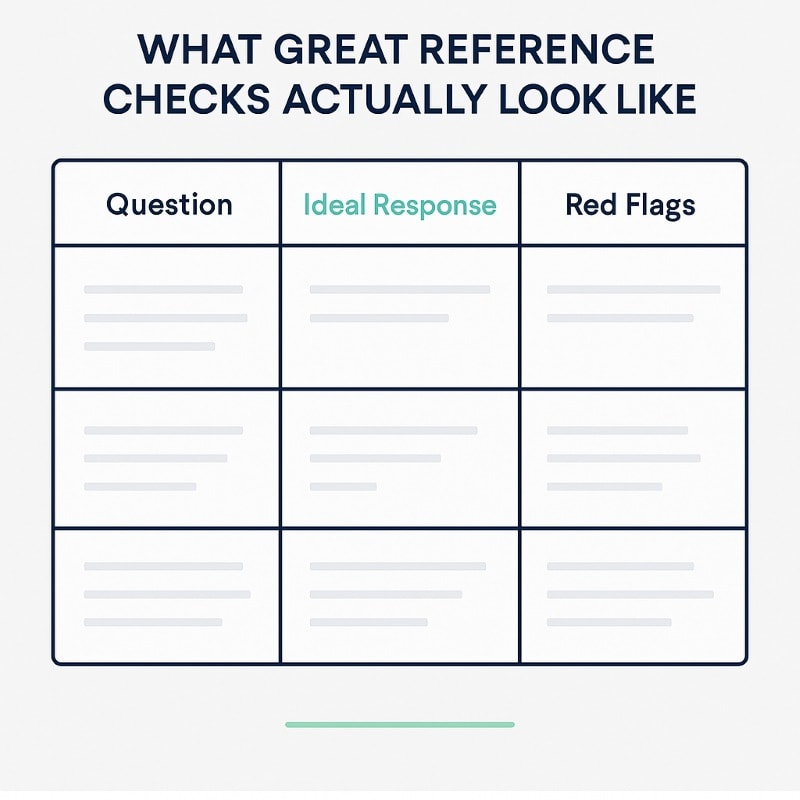
Recruitment fraud is also on the rise—especially in remote and hybrid roles. Always verify identities, double-check credentials, and keep sensitive data like Social Security numbers secure. When in doubt, let structured tools—not guesswork—guide the decision. Employers must conduct these steps carefully to ensure compliance with regulations and support a sound hiring decision.
Make the Offer Process a Strategic Win
The offer stage isn’t just about money—it’s your final opportunity to reinforce value, momentum, and trust. Yet too many companies lose great candidates here by moving slowly or sending generic emails that feel transactional. A well-organized job offer process is crucial for ensuring candidates feel valued and for increasing the likelihood that job offers are accepted.
A compelling offer communicates more than salary. It outlines growth opportunities, team impact, and how the role connects to the company’s broader mission. Job offers should also clearly specify the start date and other key employment terms, so candidates know exactly when their employment begins and what to expect. This turns an offer into a vision—and helps top candidates picture themselves thriving in your organization.
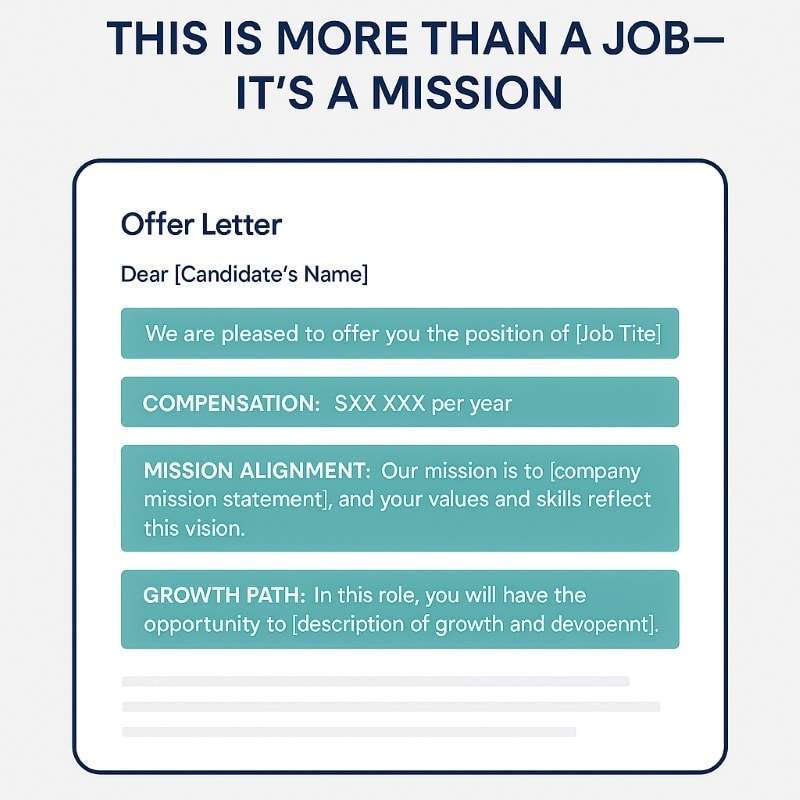
Use a formal offer letter that’s clear but human. Include next steps, onboarding details, and a direct contact for questions. The smoother your job offer process, the stronger your employer brand—and the more likely your new hire will have a positive experience that sets the stage for successful employment.
Onboarding: Where High Potential Becomes High Performance
A signed offer letter doesn’t guarantee success. What happens next—the onboarding process—is what determines whether a promising hire becomes a productive, long-term asset or quietly disengages before their first 90 days.
Strategic onboarding isn’t about paperwork and office tours. It’s about aligning expectations, embedding new hires into the culture, and accelerating their path to contribution. Great managers set the tone early with clear performance goals, role-specific training, and structured check-ins that build momentum—not confusion.
The result? Faster ramp-up, higher retention, and stronger engagement. When onboarding is treated as an extension of the hiring process—not an afterthought—it becomes a multiplier. Because great employees aren’t found. They’re developed—with intention, from day one.
Candidate Experience = Brand Experience
The way you treat candidates is a reflection of how you treat employees. Every unanswered email, delayed update, or clunky scheduling link leaves an impression—good or bad.
Top candidates often ghost not because they found something better, but because your process felt disorganized or impersonal. It’s important to identify genuinely interested candidates during the process to reduce ghosting and ensure engagement. A clear, respectful experience—one that communicates next steps, provides timely feedback, and shows genuine interest—builds trust and loyalty, even if the candidate isn’t hired. Making the process interesting and engaging can further improve how candidates perceive your company.
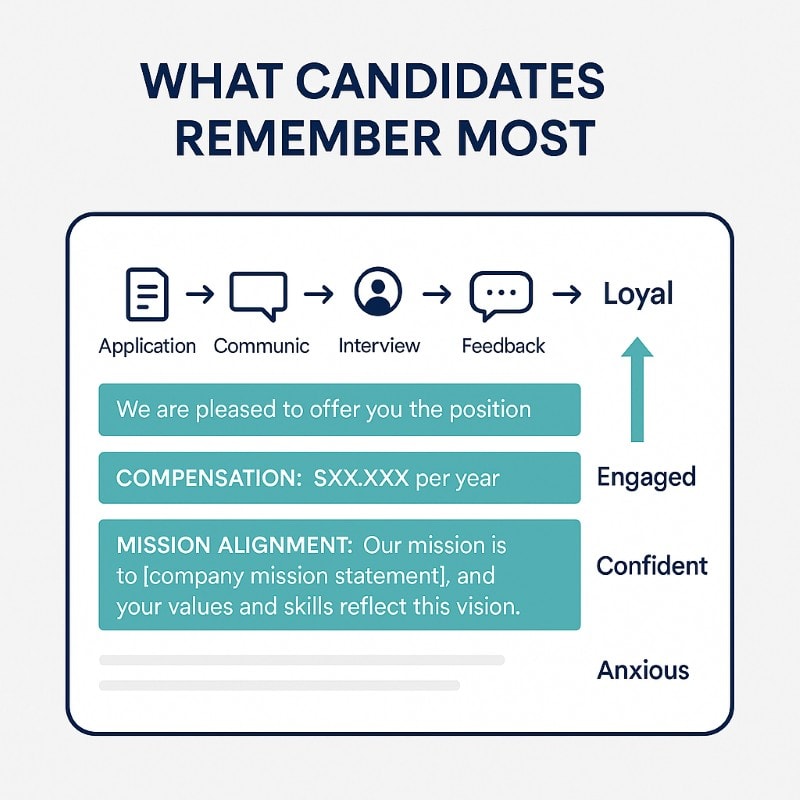
Remember: even a “no” should feel like a conversation, not a dead end. People talk. And in today’s transparent job market, your hiring process is your brand. Considering candidates’ interests helps ensure a good fit and a positive experience for everyone involved.
Build a Long-Term Talent Pipeline (Even When You’re Not Hiring)
The best time to build relationships with top candidates is before you need them. Most companies only recruit when a position opens—but proactive hiring leaders maintain a living pipeline of high-potential talent. Ongoing recruiting is essential to ensure a steady flow of qualified candidates and to keep your talent pipeline strong.
That doesn’t mean spamming inboxes. It means keeping tabs on promising candidates, staying in touch periodically, and offering value—whether it’s sharing insights, job market trends, or just a quick check-in. Outsourcing certain tasks to professional staffing agencies can also help streamline the recruiting process and make it more efficient.
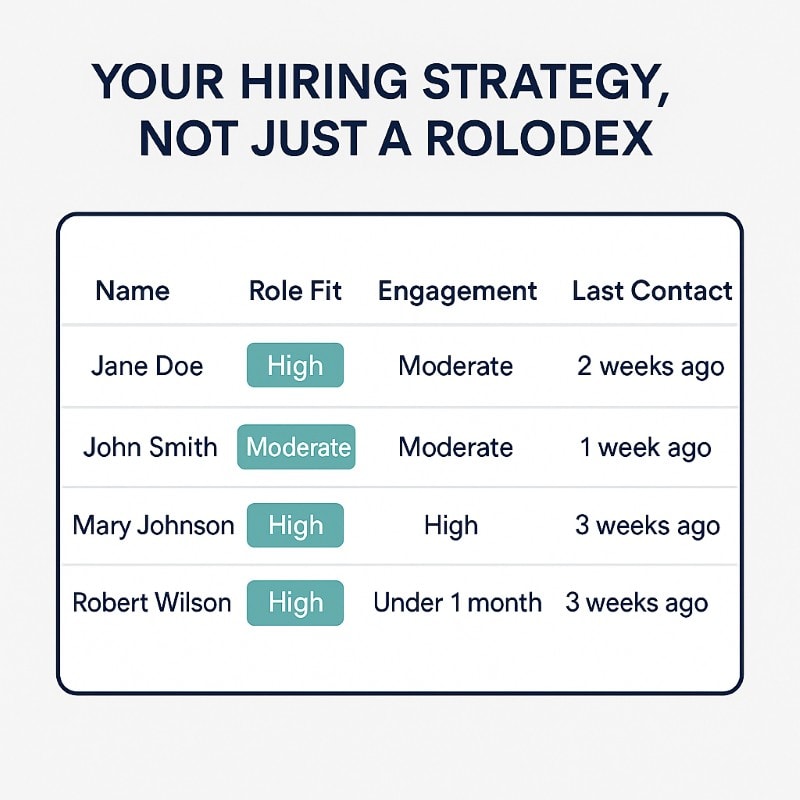
This long-game approach is how high-growth companies avoid panic hires. They don’t scramble; they select—because they’ve already built trust with future hires who are just waiting for the right fit.
Technology: The Multiplier for Smart, Scalable Hiring
Technology isn’t just a convenience—it’s a competitive edge. The right tools allow hiring managers to streamline processes, reduce bias, and make sharper decisions at scale. From applicant tracking systems to AI-powered assessments, tech enables consistency without sacrificing candidate experience.
Automation takes low-value tasks off your plate—like sorting resumes or coordinating interviews—so you can focus on high-value activities: evaluating fit, assessing potential, and building relationships. Tools like OAD’s behavioral assessments go even further, surfacing predictive data that a resume can’t reveal.
But here’s the key: technology shouldn’t replace judgment—it should enhance it. When used strategically, it empowers you to hire not just faster, but smarter. In today’s market, that’s not optional. It’s foundational.
Feedback Loops: The Hidden Driver of a Scalable Hiring Process
A great hiring process isn’t built once—it’s refined over time. That’s where feedback loops come in. The best hiring teams collect insights after every round: what worked, where candidates dropped off, and how well new hires perform once they’re in the role. This feedback can help improve the process for future jobs and job searches, making each hiring cycle more effective.
Ask your hiring managers: Were the interview questions predictive? Ask candidates: Was the process clear and respectful? Ask yourself: Did we hire for long-term success or short-term relief? It’s also important to tailor the process to the requirements of each particular job, ensuring that assessments and background checks match the unique demands of the role.
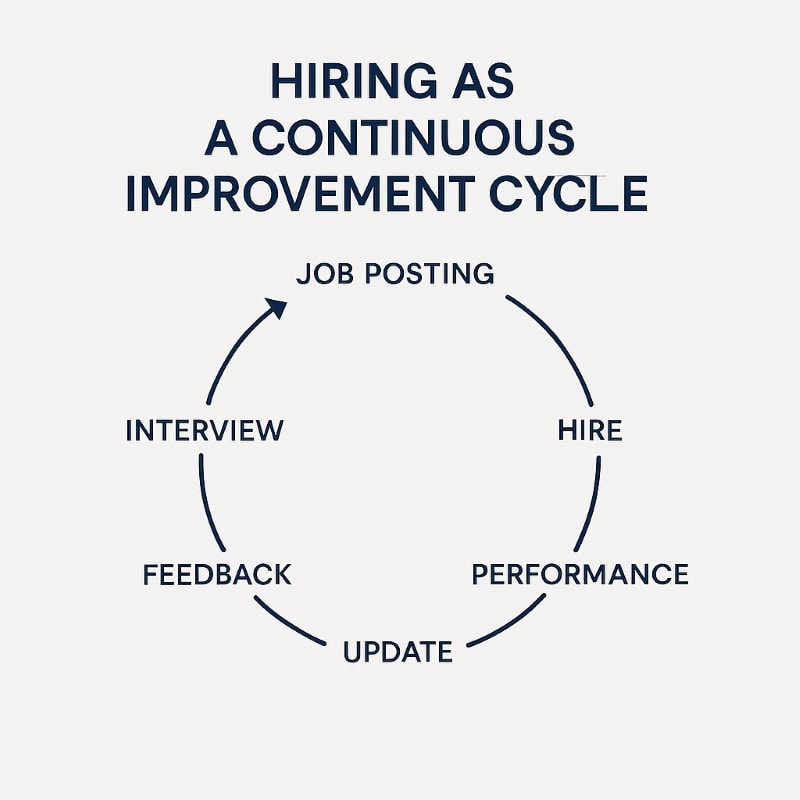
When you treat your hiring system like a product—with iterations, improvements, and data to back decisions—you don’t just fill roles. You create a repeatable engine for growth. Make sure to complete each step in the hiring process to ensure continuous improvement.
Measuring What Matters: Proving the ROI of Your Hiring Process
If you’re not measuring it, you’re guessing. And in hiring, guessing is expensive. Metrics like time-to-hire, cost-per-hire, and candidate experience are helpful—but the real measure of success is what happens after the hire.
Are new employees performing at or above expectations? Are they staying beyond the first year? Are they strengthening your culture or silently draining it?
Smart hiring managers go beyond surface metrics and track post-hire outcomes—performance data, retention trends, manager feedback, and even team cohesion. These insights reveal what’s truly working and where the process breaks down.
When you measure what matters, you don’t just improve hiring. You build a workforce that delivers measurable business results—and that’s the goal.
Small Business? Here’s How to Scale Without Overwhelm
For small businesses, hiring can feel like walking a tightrope. One wrong hire can set you back months—but waiting too long stalls growth. The key? Structure, not size.
Start by defining roles clearly and building lightweight systems. You don’t need a full HR department—just consistent tools. For example, use a templated interview scorecard, a personality-fit assessment like OAD, and a repeatable onboarding checklist. A recruiter can help small businesses manage the hiring process for various positions, ensuring each job role is clearly identified and filled efficiently.
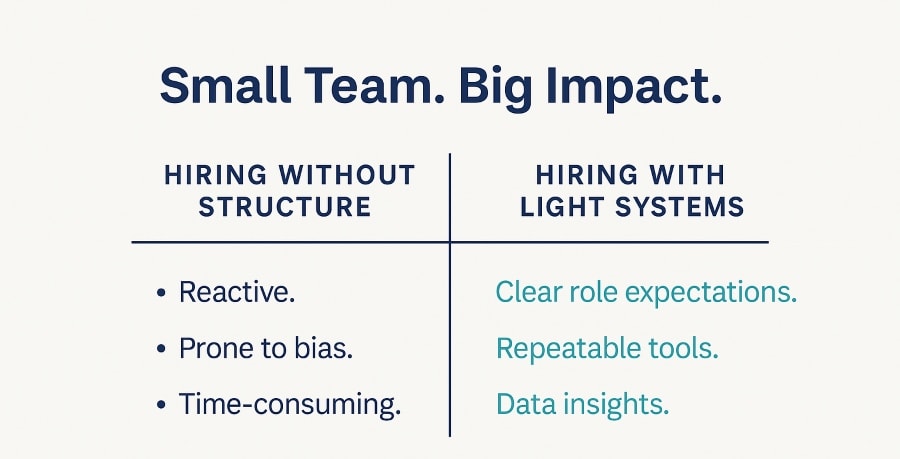
Generative AI tools can help you draft job ads, screen resumes, or even simulate interview questions. Strong writing in job ads and candidate communications is essential to attract the right talent and present your company professionally. But don’t outsource judgment. Let AI speed up the admin—and use behavioral science to guide the decision.
The Future of Hiring: What Forward-Thinking Leaders Are Already Doing
Hiring is no longer just about filling roles—it’s about future-proofing your workforce. The companies leading the pack aren’t waiting for trends to become standard. They’re already leveraging AI for smarter screening, expanding access to remote talent, and redesigning interviews to uncover more than just surface-level fit.
But it’s not just about tech. Diversity, equity, and inclusion have moved from checkbox initiatives to core business strategy. And that shift demands more thoughtful, structured hiring practices that minimize bias and maximize team potential.
The most effective hiring leaders are asking new questions:
Are we sourcing from the widest possible talent pool?
Are we using behavioral data to predict fit, not just evaluate experience?
Are we building systems that can adapt as work evolves?
The future of hiring isn’t coming—it’s here. The question is: will your process keep up, or fall behind?
Final Thoughts: From Reactive to Predictive Hiring
Hiring doesn’t have to be a gamble. With the right tools, structure, and mindset, you can transform your hiring process into a strategic engine—one that consistently attracts, evaluates, and retains high-performing talent. A well-defined selection process ensures each stage, from screening to interviews, is structured to identify the best fit for your organization.
Gut instinct might get you lucky once. But data-driven systems get you results every time. Predictive hiring also enables companies to quickly adapt and fill a new position with the right talent as business needs evolve.
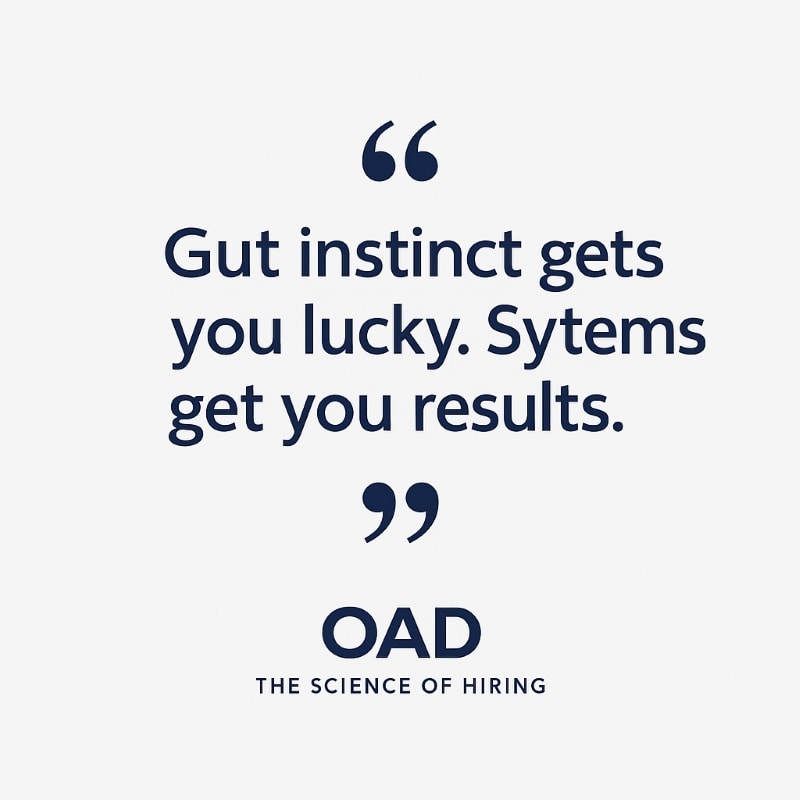
Build a Team That Drives Results
If you’re ready to stop guessing and start scaling with confidence, we’re here to help.
Try it for free today and see how OAD uses behavioral science to help you hire smarter, faster, and with less risk. Discover the science behind top-performing teams—and start building yours.
